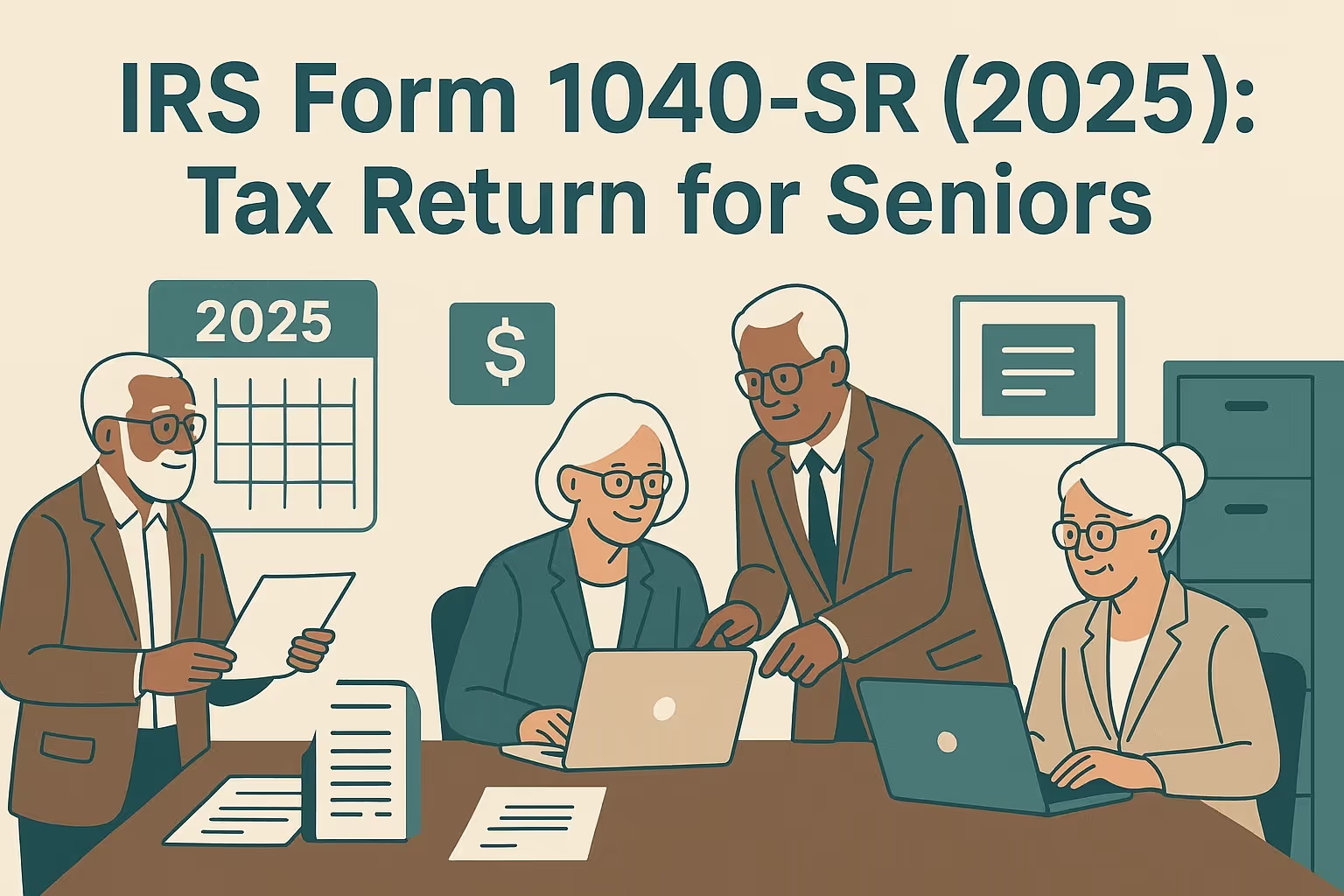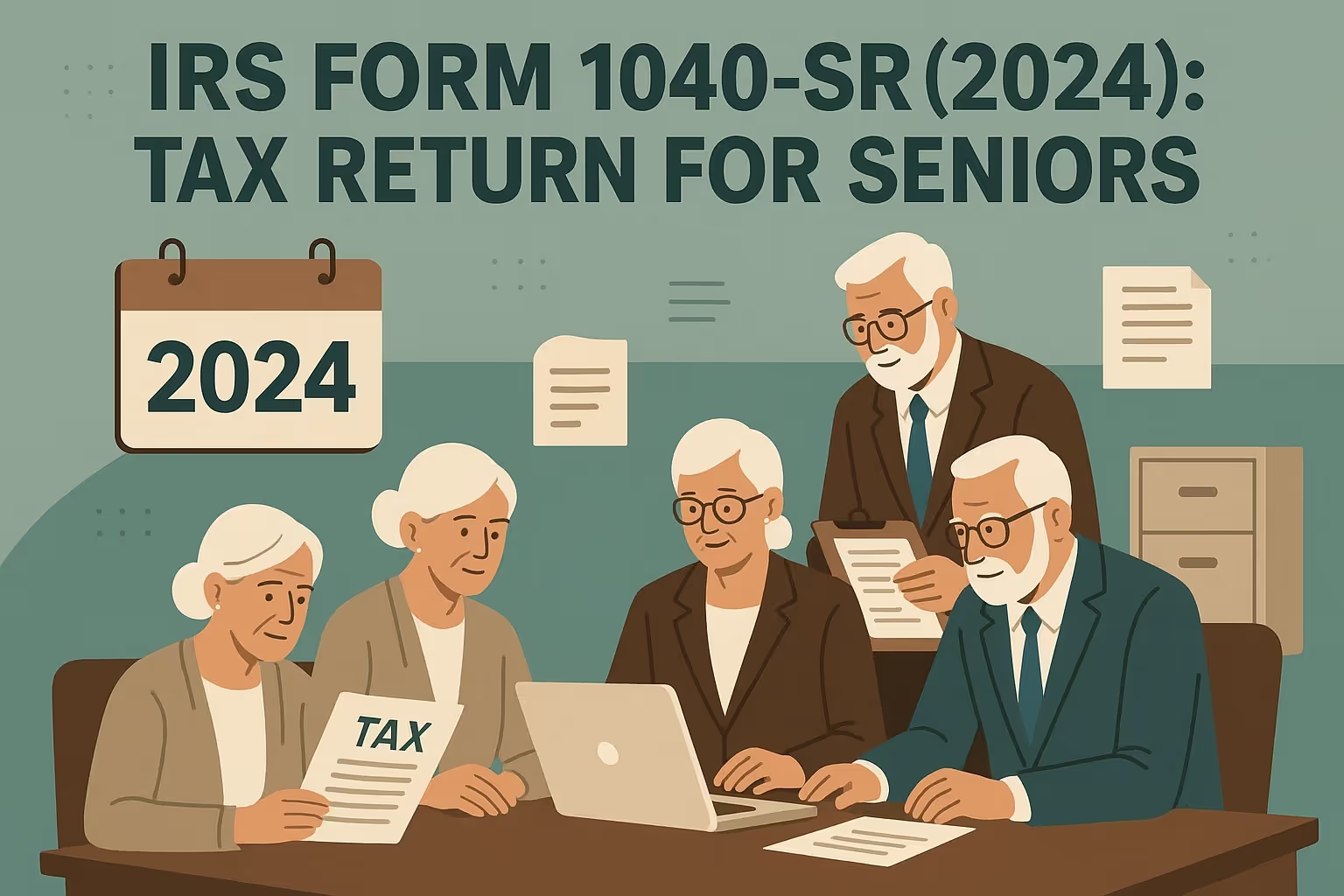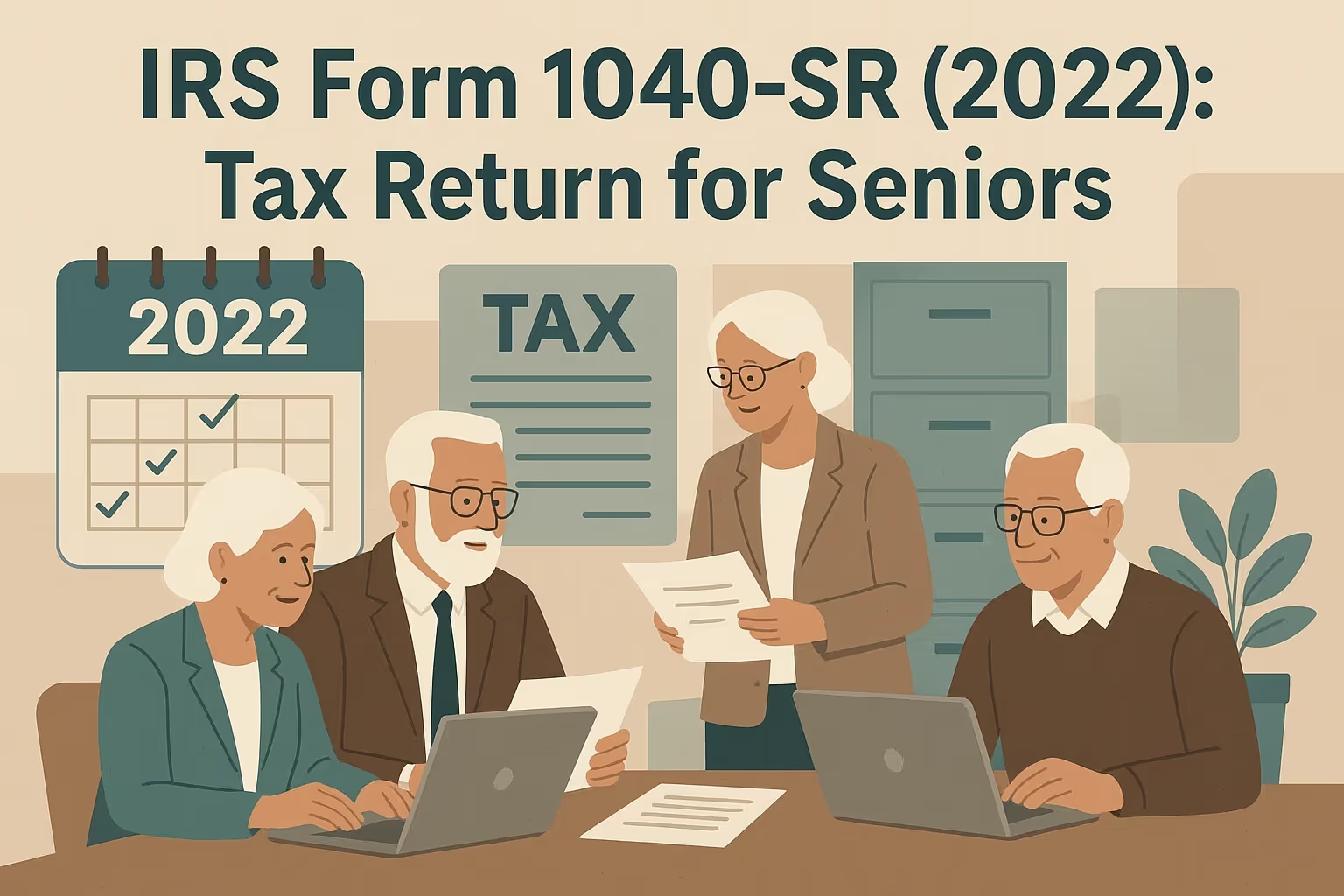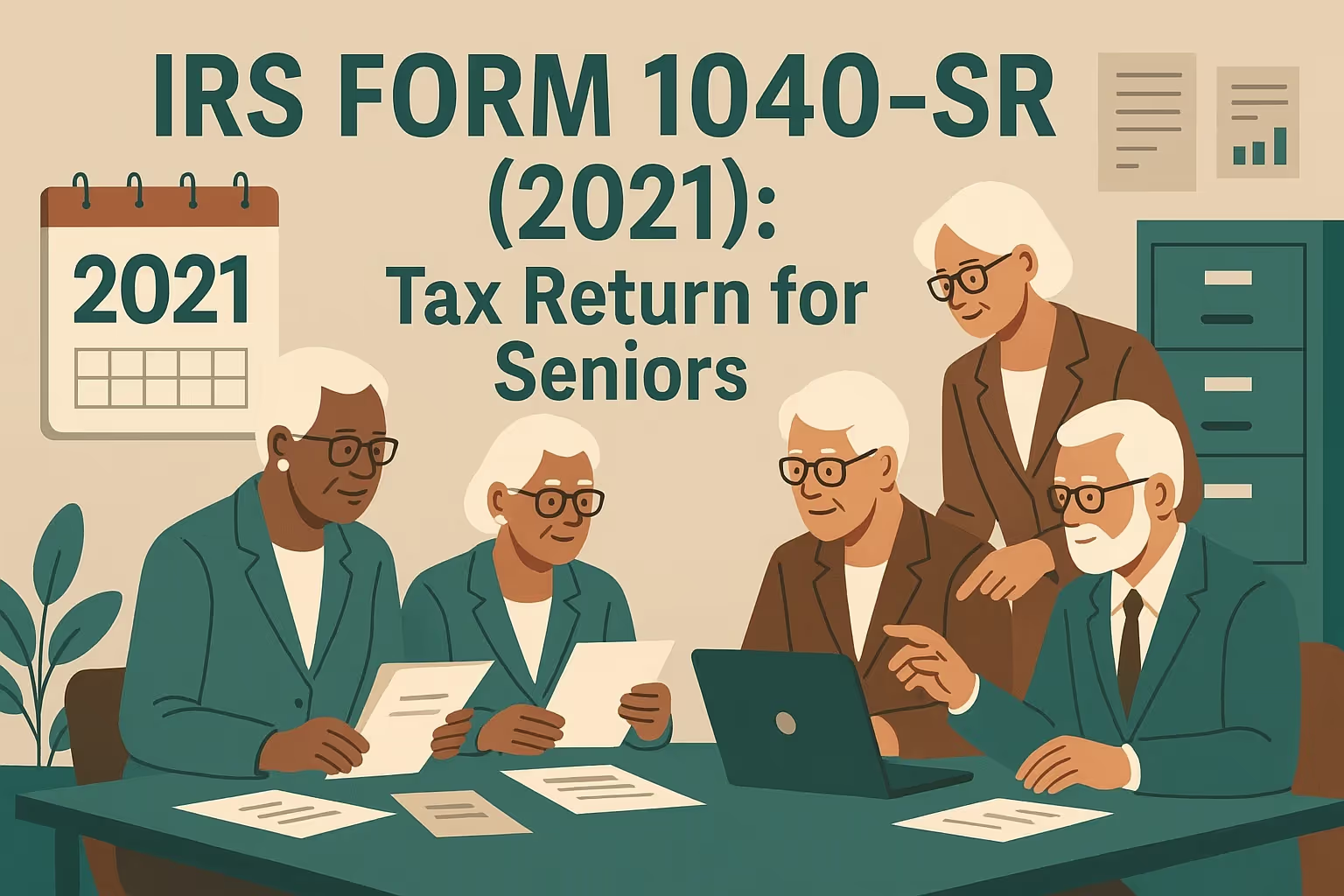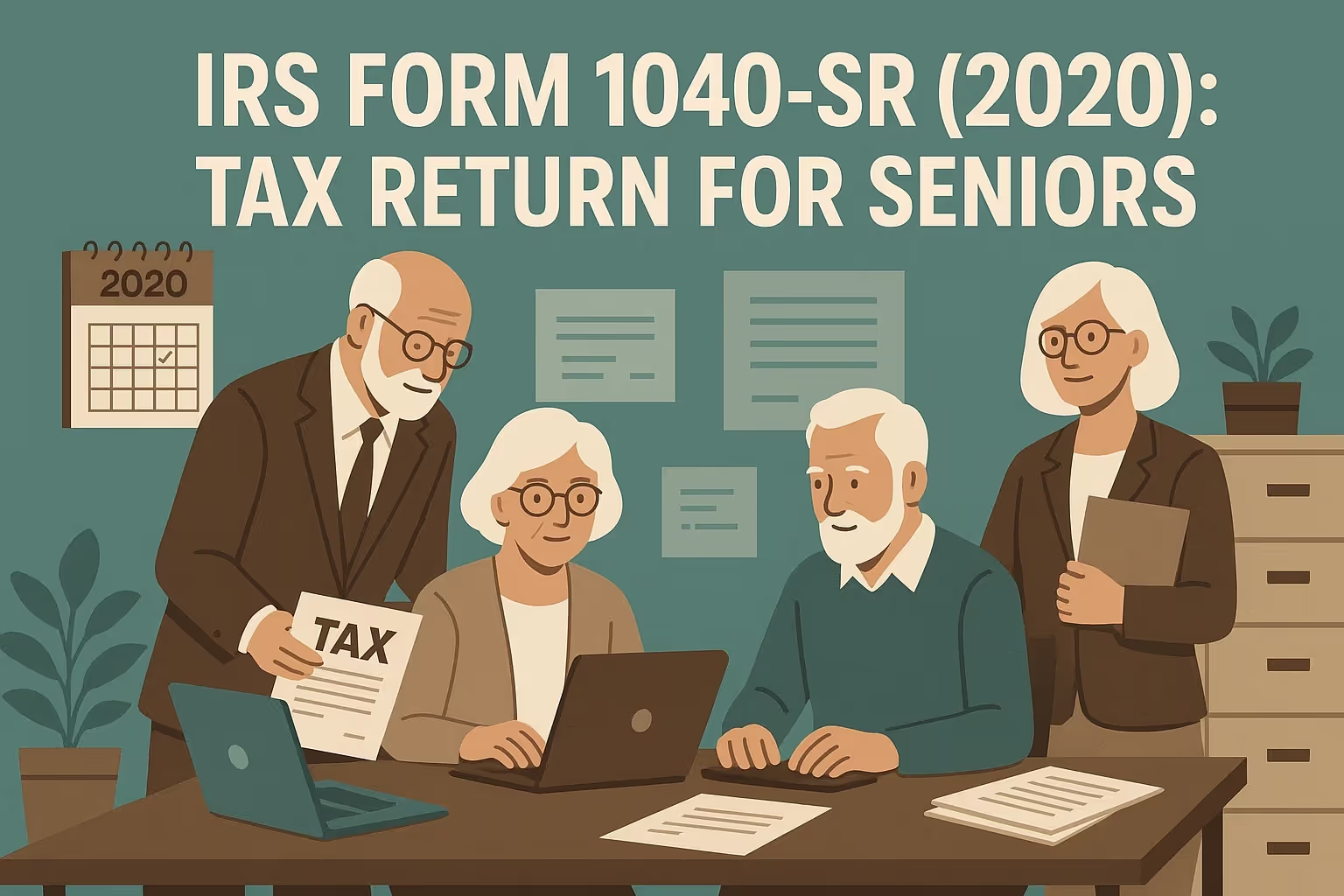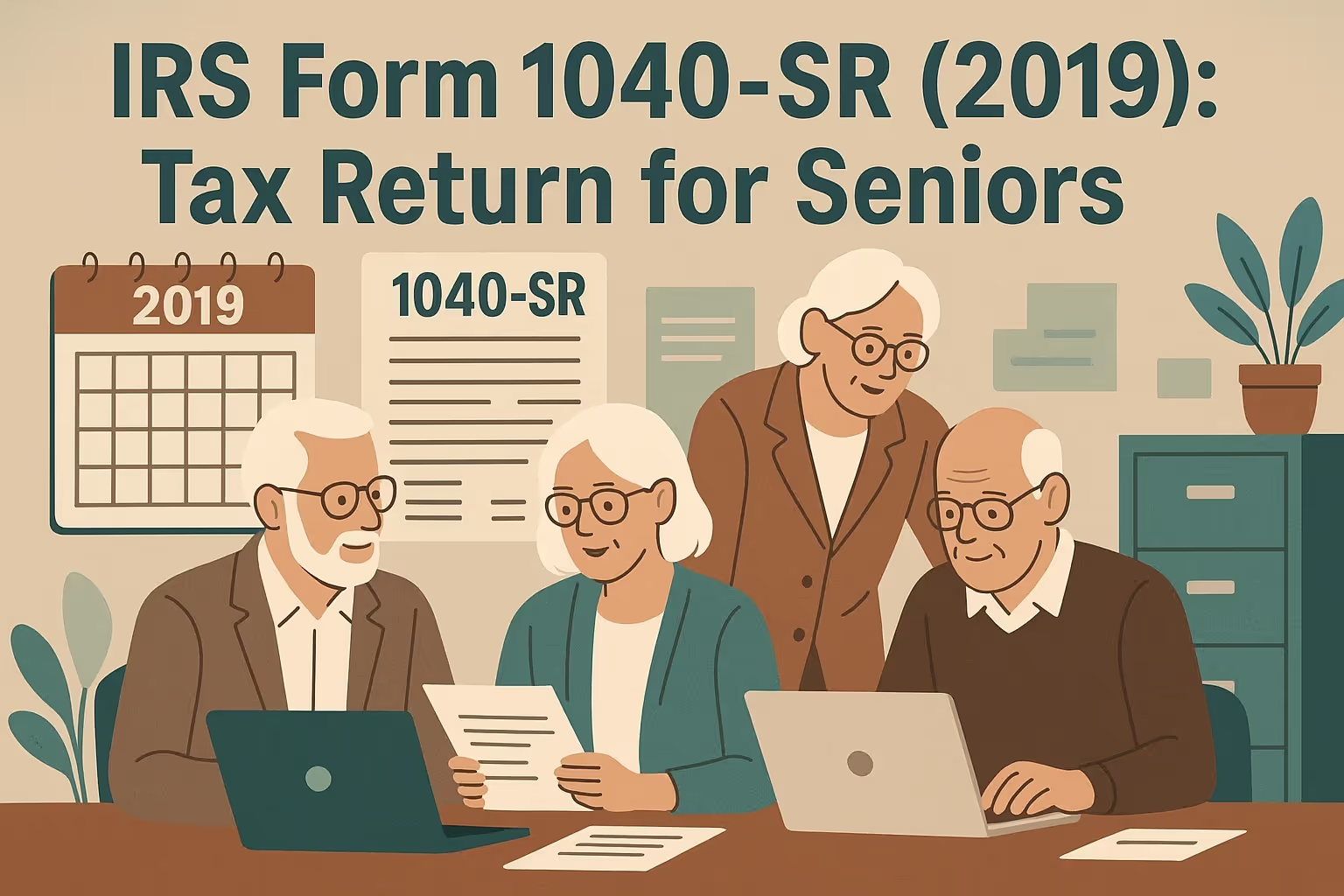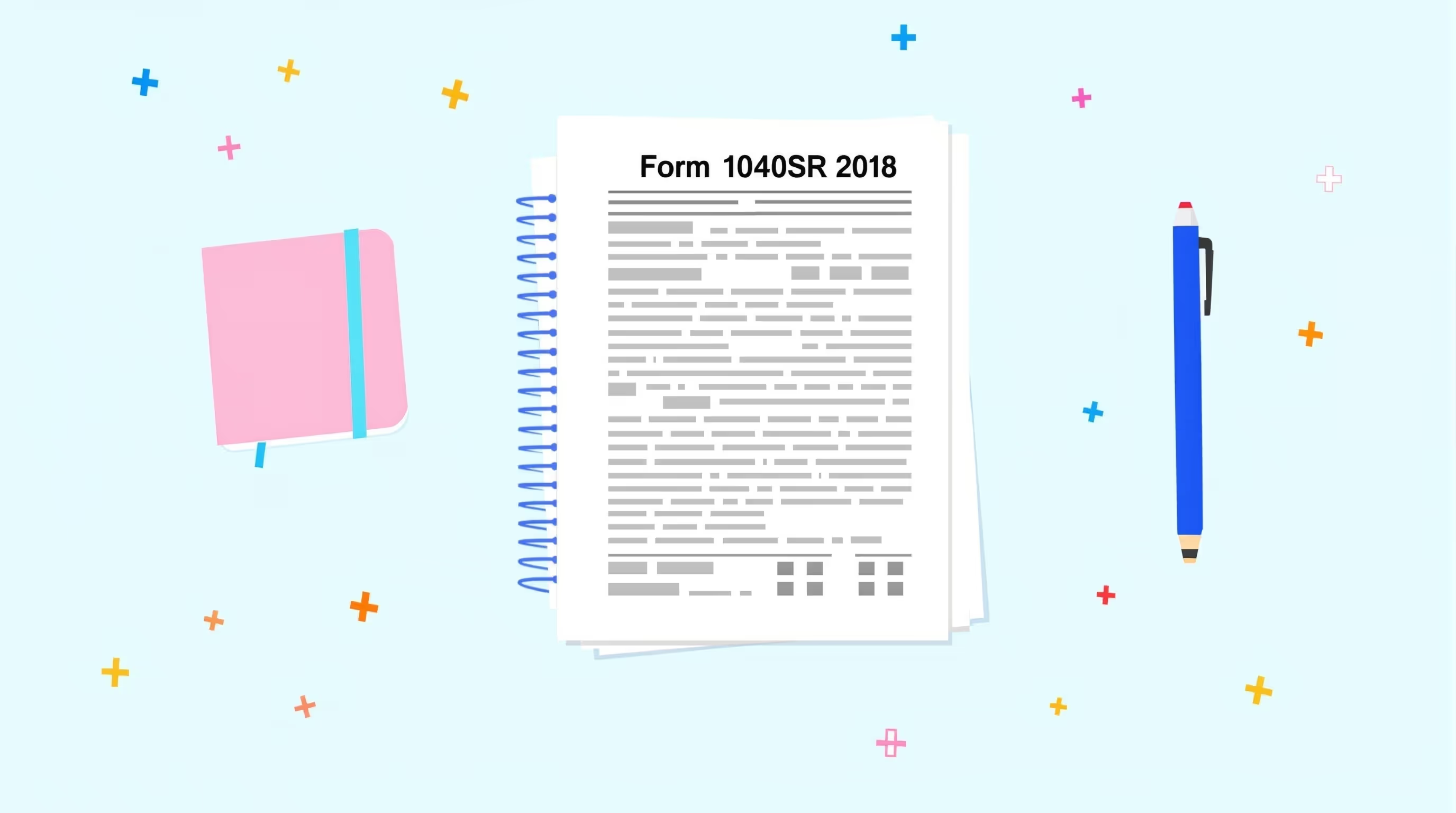IRS Form 1040-SR (2023): Tax Return for Seniors
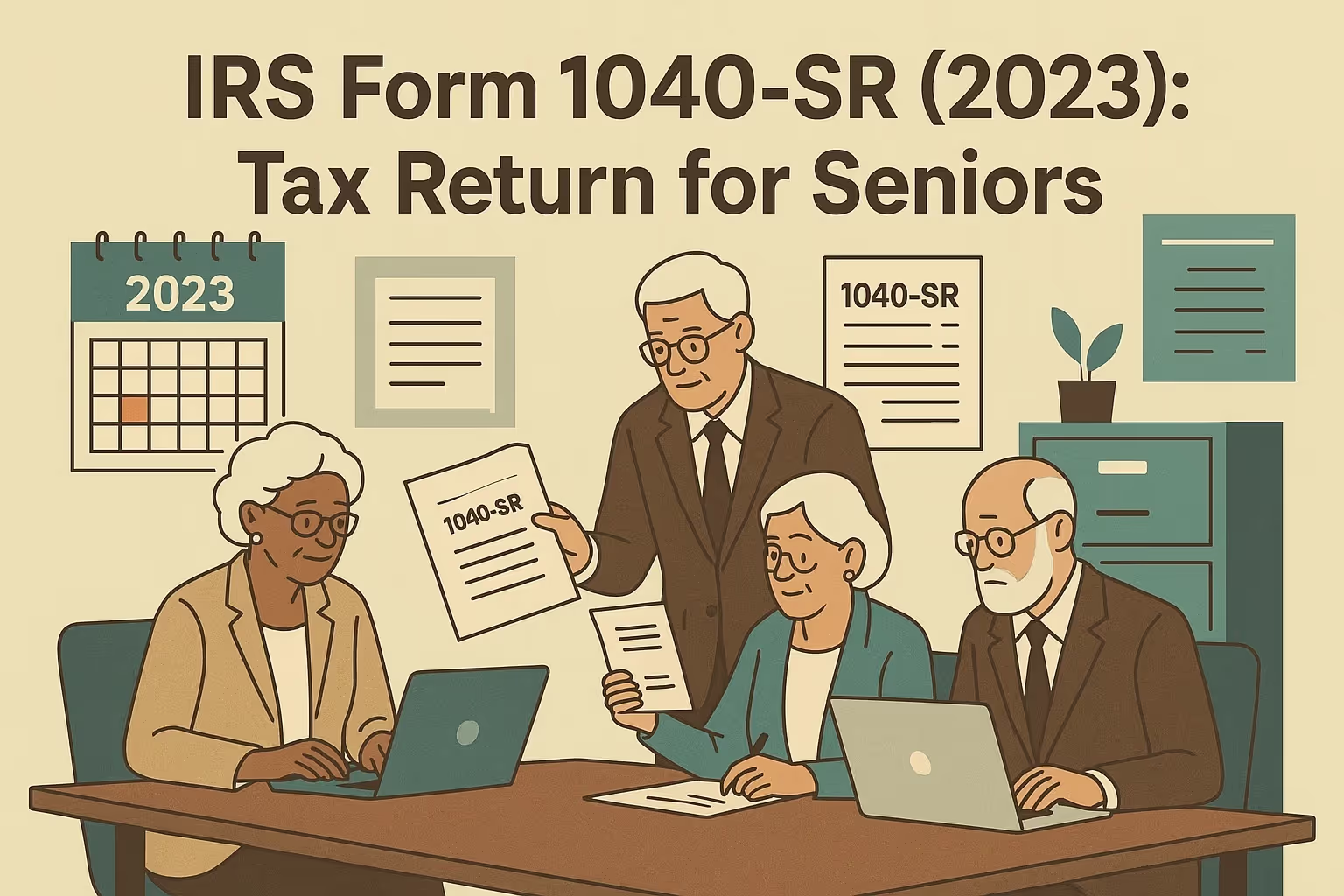
What IRS Form 1040-SR (2023) Is For
IRS Form 1040-SR (2023) is a simplified federal income tax return designed for taxpayers born before January 2, 1959—those who were age 65 or older at the end of the 2023 tax year. It functions similarly to Form 1040, but features larger text, a more straightforward layout, and includes a standard deduction chart. This form helps seniors file their income tax return accurately, ensuring that all deductions and credits are applied in accordance with existing law.
For a broader explanation of how the senior return works overall, you can review our guide to the Form 1040-SR U.S. Tax Return for Seniors.
When You'd Use Form 1040-SR for 2023 (Late or Amended Filing)
You would use Form 1040-SR for 2023 when filing taxes late, responding to an IRS notice, or submitting an amended return. Seniors who did not file on time may still qualify to claim a tax refund or pay any remaining balance on a past federal income tax return. The deadline for claiming a refund for tax year 2023 is April 15, 2027, under the standard three-year rule.
If you owe tax, include any estimated tax payments you made during 2023. Filing late doesn’t always mean penalties—if the IRS determines you had reasonable cause, it may waive or reduce penalties. Affected taxpayers can also request assistance or a payment plan to help manage their tax bill or unpaid tax balance.
If you also have older unfiled returns, our guide on unfiled federal income tax returns from 2010 to 2024 explains how the IRS handles multiple years and what you may need to provide.
Key Rules Specific to 2023
- Standard Deduction Amounts: For 2023, single seniors can claim a standard deduction of $15,700. Married couples filing jointly can claim $29,200 if one spouse is age 65 or older, or $30,700 if both spouses qualify for the additional deduction.
- Clean Vehicle Tax Credits: The previously owned clean vehicle tax credit was introduced for the 2023 tax year and is reported on line 6m of Form 1040-SR.
- Increased Child Tax Credit: The maximum additional child tax credit increased to $1,600 per qualifying child under existing law.
- Expired or Changed Credits: Certain refundable credits and deductions available in 2023 were discontinued or modified for use in later years. Therefore, taxpayers filing late must review the 2023 instructions carefully.
Step-by-Step (High Level)
- Gather tax transcripts: Request your 2023 transcript from IRS.gov/GetTranscript or call 800-908-9946. Review your gross income, wages, and estimated tax payments for accuracy.
- Complete the correct form: Use only IRS Form 1040-SR (2023) and verify the tax year before filing.
- Attach schedules: Add Schedules 1, 2, or 3 as required for additional income, deductions, or refundable credits.
- Choose a filing method: You can e-file through an approved provider that supports prior-year returns, or mail your return to the correct mailing address listed in the 2023 instructions.
- Keep copies: Retain your tax return, schedules, and payment records for at least three years after the due date.
If you are unsure which schedules or attachments apply, visit our IRS Form Help Center for clear explanations of commonly used IRS forms.
Common Mistakes and How to Avoid Them
- Using the wrong form: Always download and file the exact tax year’s form—such as the 2023 version—because submitting the current-year version can lead to processing delays or a delayed refund.
- Applying incorrect deduction amounts: Seniors must use the current additional standard deduction amounts for their status.
- Missing penalty forms: When applicable, include Form 2210 to calculate the late payment penalty or underpayment interest.
- Mailing to the wrong address: Always check the IRS mailing address for 2023 returns.
- Errors in Social Security reporting: Use worksheets provided by the Social Security Administration for accuracy.
- Ignoring penalty relief: Taxpayers with reasonable cause may request a waiver for specific IRS penalties or file penalty reductions.
If you are deciding whether the standard version or the senior version is more appropriate, our Form 1040 guide walks through the regular individual income tax return and who typically uses it.
What Happens After You File
The IRS typically processes late 2023 returns within six to eight weeks, though complex filings may take longer. You may receive an IRS notice confirming your tax refund or showing a tax bill. Seniors who cannot pay their full balance may qualify for an installment agreement. Our detailed guide to IRS payment plans explains how the application works and what monthly payment options may look like.
If you owe tax, the IRS charges interest daily and applies a 0.5% monthly failure-to-pay penalty. A 5% monthly failure-to-file penalty can also apply, up to 25% of the unpaid tax. If payment is more than 60 days late, a minimum penalty of $485 or 100% of the unpaid balance, whichever is less, applies.
If you can’t pay the full amount, you can apply for a payment plan using Form 9465. The IRS charges setup fees, and interest continues to accrue until the balance is paid in full. Paying electronically from your bank account helps avoid mail delays and ensures faster processing.
FAQs
Can I still get a refund if I file my 2023 return late?
Yes, you can still claim a refund for tax year 2023 if you file by April 15, 2027. Filing late when you’re owed a refund doesn’t trigger penalties, but after the deadline, you permanently lose your right to claim it, even if IRS records show you overpaid.
What penalties will I owe for filing my 2023 return late?
If you owe tax, the IRS charges interest and penalties based on the length of time your return and payment are overdue. The late filing penalty is 5% per month, up to a maximum of five months. The late payment penalty is 0.5% per month, accruing until the full amount owed is paid. Interest charges also apply daily until the remaining balance is paid.
How do I get my 2023 tax transcripts before filing?
You can request tax transcripts online at IRS.gov/GetTranscript, by phone, or by submitting Form 4506-T. These transcripts display your income, wages, and tax withholdings, enabling you to complete an accurate federal income tax return and avoid IRS notices or additional penalties.
Should I amend my state return if I file a late federal return?
Usually, yes, you should. If your federal income or deductions change, you may need to amend your state return. Each state’s rules differ, so contact your state tax agency for the correct mailing address, deadlines, or extensions.
Can I e-file a late 2023 Form 1040-SR?
Yes, some software providers still support e-filing for prior-year returns. If e-file is unavailable, you must mail your completed return to the IRS. Check that you’re using the correct tax year form to ensure your tax filing is accepted.
What’s the difference between Form 1040-SR and Form 1040 for 2023?
The two forms calculate federal income tax the same way and accept the exact schedules. The difference lies in presentation—Form 1040-SR features larger text, a more straightforward layout, and includes a standard deduction chart specifically designed for seniors.
How long should I keep records after filing my 2023 return?
Keep all tax documents, receipts, and transcripts for at least three years after the filing date or payment date. If you underreport income by more than 25%, retain them for six years. If you never file, the IRS can assess tax at any time. Maintaining complete records helps if the IRS requests information or questions your return in the future.
















